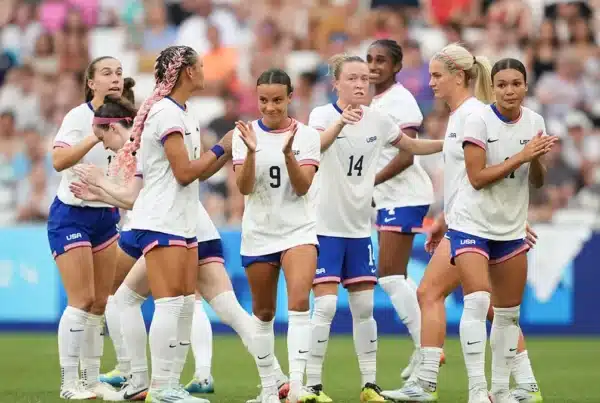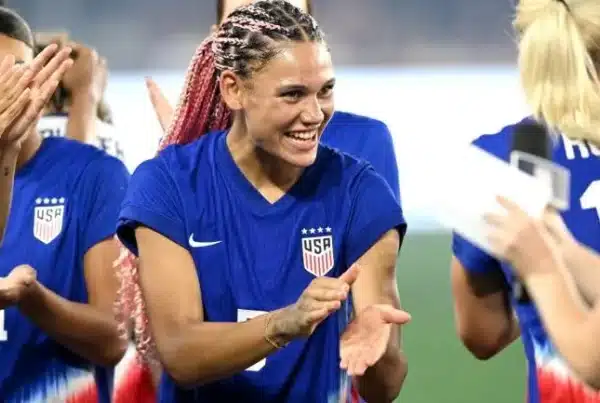
The fall and winter sports seasons bring their own set of challenges for athletes and coaches alike. As temperatures drop, the risks associated with sports increase, making it crucial for coaches to take proactive measures to ensure their athletes’ safety and well-being. This guide covers the essential aspects of preparing for cold weather, off-season planning, maintaining coaching relationships, and handling overlapping sports seasons, providing a comprehensive approach to safeguarding student-athletes.
Preparation for Cold Weather Conditions
Cold weather demands specific strategies to keep athletes safe and performing at their best. Coaches must consider several key factors when preparing their teams for outdoor practices and competitions in colder climates.
Warm-Up Routines
Cold muscles are significantly more prone to injuries, making a proper warm-up routine indispensable. Start with light, dynamic exercises that gradually increase in intensity. This approach helps to elevate body temperature and prepare muscles for the strenuous activities ahead. Incorporating movement-based stretches, such as leg swings and arm circles, can also be beneficial in loosening up tight muscles.
Layering and Appropriate Gear
Dressing appropriately for cold weather is about more than just comfort—it’s a safety necessity. Layering allows athletes to regulate their body temperature, allowing them to add or remove layers as needed. Coaches should ensure athletes have access to proper gear, such as thermal socks, gloves, hats, and moisture-wicking base layers to protect against the elements. Additionally, it’s important to emphasize that athletes on the sidelines should stay warm and keep moving to prevent muscle cooling and stiffening.
Hydration in Cold Weather
Hydration remains critical even in cold temperatures. The dry air associated with colder climates can be dehydrating, and athletes might not feel as thirsty as they do in the heat. Coaches should encourage regular water intake and educate athletes on the importance of staying hydrated, regardless of the temperature.
Injury Prevention in Fall and Winter Sports
Injuries are more common during the fall and winter sports seasons, particularly in contact and high-intensity sports. Coaches must be diligent in preventing and addressing these injuries to keep their athletes safe.
Concussions and Head Injuries
Sports like football, soccer, and hockey carry an increased risk of head injuries. Properly fitted helmets are essential in reducing the risk of concussions. Coaches should regularly check equipment for proper fit and condition, and educate athletes on the signs of concussion, such as dizziness, confusion, and headaches. Immediate action is necessary if a concussion is suspected, including removing the athlete from play and seeking medical evaluation.
Sprains, Strains, and Muscle Injuries
The physical demands of sports like basketball, wrestling, and hockey increase the likelihood of sprains, strains, and muscle injuries. Coaches should emphasize proper technique in all drills and exercises, ensuring athletes are not overexerting themselves. Implementing cross-training routines can help distribute physical stress across different muscle groups, reducing the risk of overuse injuries. Adequate rest periods are also crucial for recovery, and coaches should encourage athletes to avoid overtraining.
Emergency Preparedness for Coaches
Being prepared for emergencies is a non-negotiable aspect of coaching, especially during the colder months when the risk of injury can be higher.
First Aid and Emergency Equipment
Every coach should be trained in basic first aid, with a particular focus on managing sports-related injuries. This includes knowing how to treat fractures, sprains, and concussions before professional help arrives. A well-stocked first aid kit, including items like ice packs, splints, and bleeding control supplies, should be readily available at all practices and games. Additionally, coaches must be familiar with the location and operation of Automated External Defibrillators (AEDs) at their facilities.
Off-Season Planning and Year-Round Coaching Relationships
The off-season is an important time for reflection, planning, and maintaining relationships with athletes. Using this time wisely can set the tone for a successful upcoming season.
Reflect and Plan
The off-season offers a chance to review the previous season’s successes and challenges. Coaches should use this time to plan for tryouts, establish player selection criteria, order necessary equipment, and update team materials such as practice schedules and rules. It’s also an opportunity for coaches to recharge, ensuring they are mentally and physically prepared for the demands of the upcoming season.
Maintaining Coaching Relationships
Staying connected with athletes during the off-season can be highly beneficial. Coaches who maintain year-round relationships are better positioned to address athletes’ weaknesses and keep them accountable. Ongoing communication helps in directing off-season training efforts and ensuring that athletes remain on track, both physically and mentally.
Handling Overlapping Sports Seasons
Many student-athletes participate in multiple sports with overlapping seasons. As a coach, it’s important to accommodate these athletes’ diverse commitments.
Flexibility and Communication
Coaches should be flexible with practice schedules to accommodate athletes who are involved in more than one sport. Open communication with athletes and other coaches is key to setting realistic expectations and managing time effectively. Understanding how participation in multiple sports can enhance overall athletic development is essential to supporting athletes in their multi-sport endeavors.
Promoting a Culture of Safety
Creating a culture where safety is prioritized requires consistent education and open communication.
Educating Athletes
Safety education shouldn’t be limited to coaches alone. Athletes must understand the importance of protecting themselves and their teammates. Regular safety briefings that cover injury prevention techniques and the importance of reporting injuries can foster a safer sports environment.
Encouraging Open Communication
Athletes should feel comfortable reporting injuries or safety concerns without fear of repercussions. Coaches must cultivate an environment where these conversations are encouraged, helping to prevent minor injuries from escalating into more serious issues.
Conclusion: Coaches, Take Action
As a coach, your role extends beyond teaching skills and strategies. By prioritizing safety through proper preparation, injury prevention, and emergency readiness, you protect the health and well-being of your athletes. This commitment not only helps your team succeed in the short term but also ensures that every athlete remains healthy and fit throughout the fall and winter sports seasons.
Author: Mike Brinker
Published: October 8, 2024
Originally posted on:






